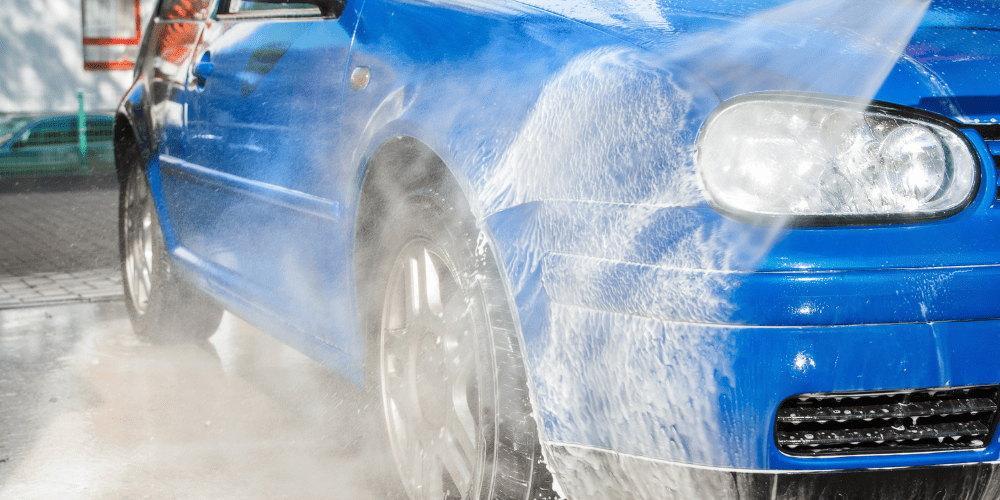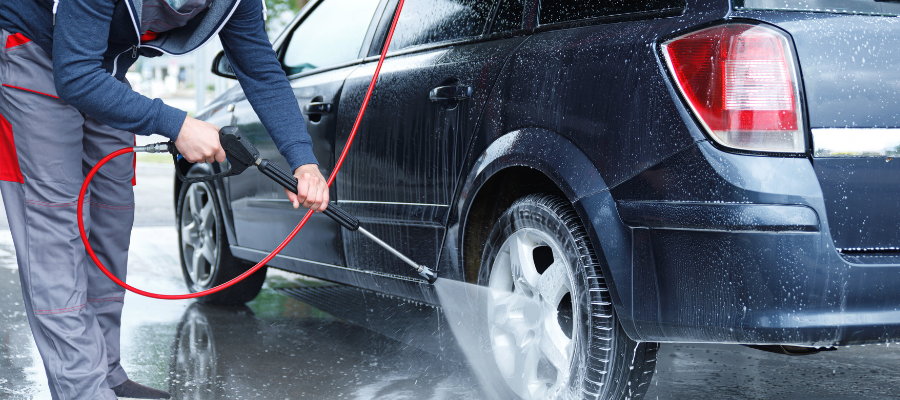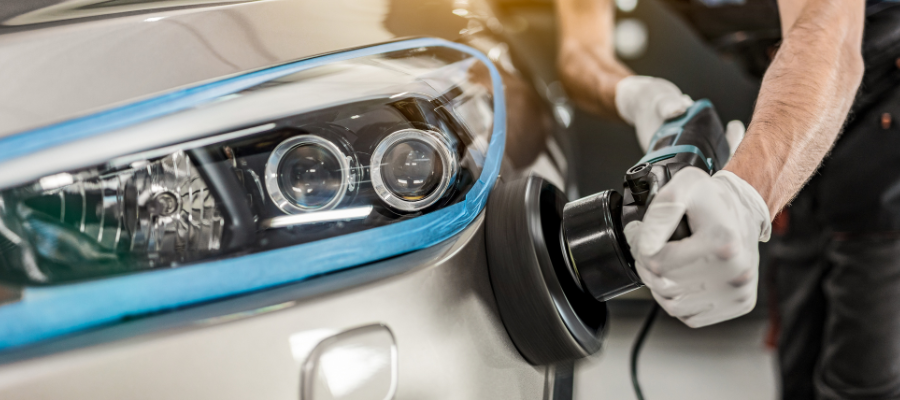Feeling a bit confused about mobile car valeting? Wondering how it works and what’s usually included in a typical service? You’re in the right place.
I’m here to spill the beans on everything you need to know about mobile valeting, so you can decide if it’s worth spending your hard-earned cash.
Overview
Mobile car valeting is a convenient service where a car care professional comes directly to your chosen location to wash and clean your car. Usually, the valeter brings all the necessary tools and equipment to get the job done wherever your car is parked. This can be at home, work, the gym, or even while you’re out shopping.
What’s included in the service can vary depending on the provider and the packages they offer. But as a general rule, a typical mobile car valet usually includes:
- Prewash: A gentle spray or specialised solution like snow foam is applied and then rinsed off to loosen dirt, dust, and grime from the surface of the car, helping to reduce the risk of scratches during washing.
- Hand wash: Following the prewash, the car is carefully washed by hand using quality car shampoo and soft mitts or sponges to gently clean the surface.
- Wheel and tyre cleaning: Wheels and tyres are thoroughly cleaned using specialist wheel cleaners and brushes to remove brake dust, grime, and road dirt.
- Mirrors and window cleaning: Windows and mirrors are sprayed with glass cleaner, wiped with a microfiber cloth, and buffed to a streak-free shine.
- Drying: After the wash, the car is dried using a soft microfiber towel or air blower to prevent water spots and protect the paintwork.
- Clay bar treatment (optional): A clay bar is used to lift stubborn contaminants like tar, tree sap, and brake dust that a standard wash can’t remove.
- Polishing (optional): Helps correct surface imperfections like light scratches, swirl marks, or dull paint using a machine polisher or hand applicator.
- Waxing or sealing (optional): A layer of natural wax or synthetic sealant is applied to protect the paint from UV rays, water, dirt, and other contaminants.
- Interior cleaning: Typically includes rubbish removal, vacuuming, and a wipe-down of surfaces. Extras like dashboard polishing, carpet shampooing, and odour removal are often available as add-ons or included in higher-tier packages.
Step 1: Prewash
- Valeters start with a prewash using gentle sprays or snow foam to loosen dirt.
- The prewash is rinsed off before the main exterior cleaning begins.
- This step helps make washing more effective and protects the car’s surface.
Most car valeters begin with a prewash, applying a gentle spray or specialised solution like snow foam to loosen dirt, dust, and grime. This is then rinsed off to prepare the car for the main exterior cleaning.
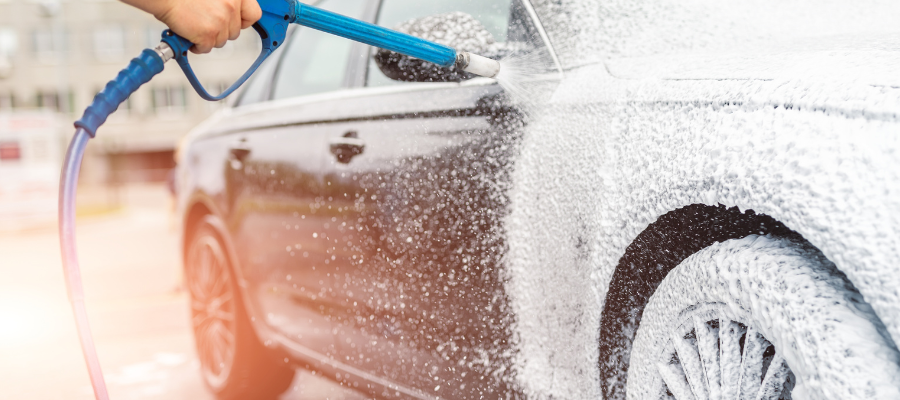
Prewashing is an essential step because it loosens dirt and grime, making the main wash more effective and reducing the risk of damage. Some valeters may prewash the vehicle multiple times before moving on.
Step 2: Hand Wash
- Next is a hand wash using pH-balanced shampoo and soft microfiber mitts.
- The two-bucket method helps prevent scratches by keeping dirt away from the paint.
- Every part of the car, including detailed areas, is carefully cleaned.
After the prewash, the next step is usually a hand wash. The valeter uses a pH-balanced shampoo and soft microfiber mitts, following the two-bucket method to gently but thoroughly clean the car’s exterior.

This approach helps keep dirt and grit away from the paintwork, reducing the risk of swirl marks and scratches. Every panel receives careful attention, including tricky areas like door jambs, badges, and trim pieces.
Step 3: Wheels and Tyre Cleaning
- Wheels and tyres are sprayed with a specialised cleaner to remove brake dust and grime.
- Stiff brushes clean tyres; softer brushes clean rims and spokes.
- Wheels are rinsed, and optional protective dressing may be applied for shine.
At this stage, the valeter will turn their attention to the wheels and tyres. They typically spray a specialised wheel cleaner that is either acidic or pH-balanced onto the surfaces to break down stubborn brake dust, grease, and grime that has built up over time.
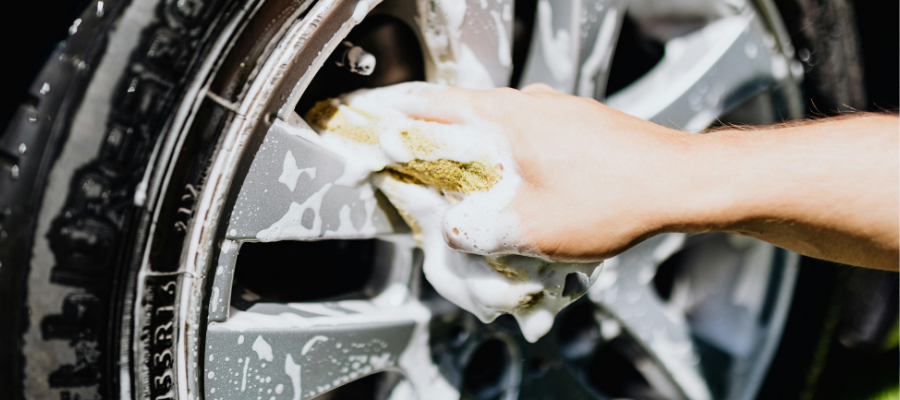
Then, different brushes are used. Stiff ones clean the tyres while softer, more delicate brushes tackle rims, spokes, and hard-to-reach spots. The wheels are thoroughly rinsed with water to wash away all the dirt and cleaning solution.
In some cases, a protective dressing is applied to enhance shine and restore that deep black finish to the tyres, though this is often offered as an optional extra.
Step 4: Drying
- Drying removes all water using soft microfiber towels or air blowers.
- Prevents water spots and highlights imperfections.
- Ensures wax or sealant bonds well and protects the paint.
Drying is a critical stage in the valeting process that ensures the vehicle’s surface is clean, streak-free, and ready for further detailing.
Using soft, high-quality microfiber towels or touchless air blowers, all remaining water is carefully removed from the paintwork, glass, wheels, and crevices. This prevents water spots, which can form if minerals in the water are left to dry on the surface.
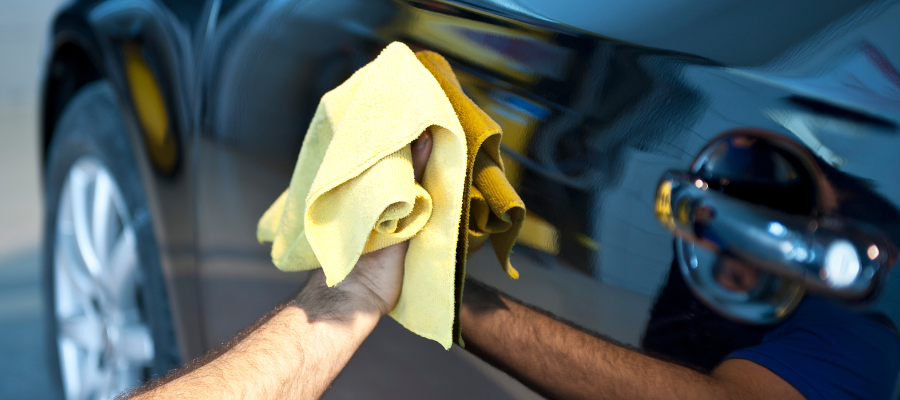
Thorough drying also helps highlight any imperfections that may need attention during polishing, and it ensures that protective products like wax or sealant can bond properly to the paint. Proper technique during drying helps maintain the finish and avoid swirl marks or scratches.
Step 5: Mirrors and Window Cleaning
- Mirrors and windows are cleaned with glass cleaner or vinegar solution.
- Dirt and spots are wiped away with lint-free microfiber cloths.
- Buffed dry for a streak-free, clear finish inside and out.
Once the wheels have been cleaned, the valeter will likely tackle the mirrors and windows. This stage is essential not only for aesthetics but also for visibility and safety. The process usually begins by spraying a high-quality glass cleaner or a vinegar-based solution onto the surface of the mirrors and windows.
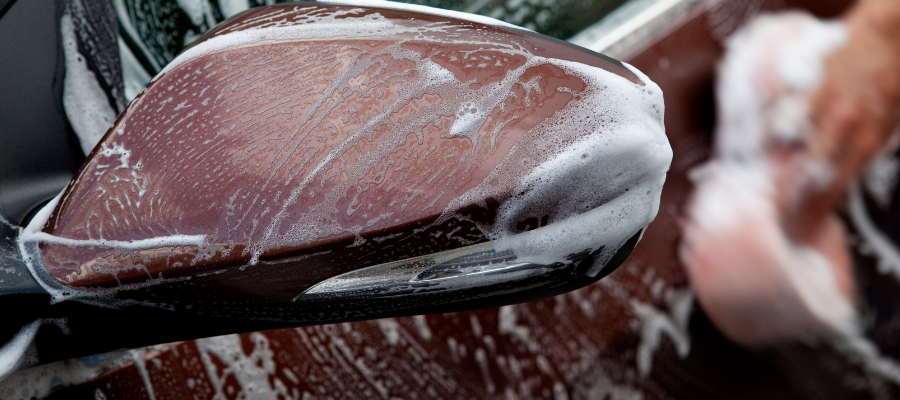
The valeter then uses a clean, lint-free microfiber cloth to gently wipe away any dirt, fingerprints, or water spots. Special attention is given to the edges and corners, where grime tends to accumulate. For a streak-free finish, a second dry cloth may be used to buff the glass, ensuring maximum clarity both inside and out.
Step 6: Clay Bar, Polishing and Waxing
After washing and drying the exterior, the valeter usually proceeds to clay bar treatment, polishing, waxing, and sealing. These steps are often extras, add-ons, or part of premium packages. Here’s a closer look at each and what they do:
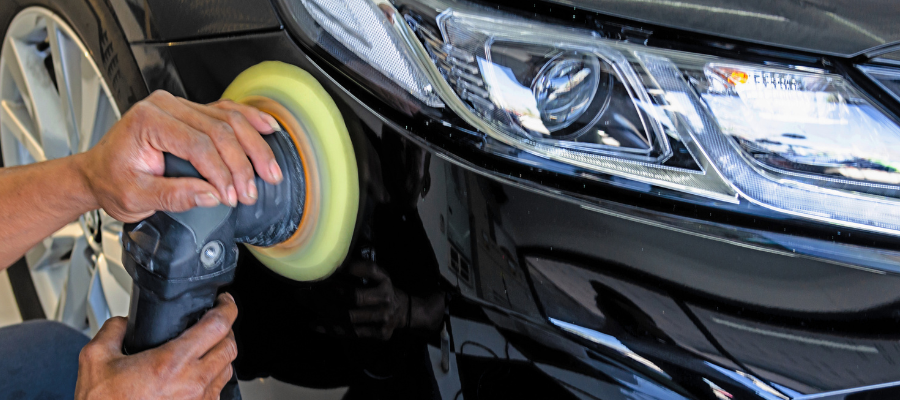
- Clay bar treatment: A clay bar, used with lubricant, removes stubborn contaminants such as tar and tree sap that a regular wash cannot eliminate.
- Polishing: This process uses a machine polisher or hand applicator to correct surface paint imperfections such as light scratches, swirl marks, oxidation, and dullness.
- Waxing or sealing: A natural wax or synthetic sealant is applied and then buffed out to create a protective layer that guards against UV rays, water, and dirt.
Step 7: Interior Cleaning
- Interior cleaning includes wiping surfaces, removing rubbish, and vacuuming carpets and seats.
- Deep cleaning like shampooing or steam cleaning may be offered.
- Additional services include pet hair removal, odour control, and leather care.
Finally, if it’s included with your package, the valeter will move on to cleaning the interior of your car. All surfaces including dashboards, consoles, door panels, vents are wiped using appropriate cleaners and tools to eliminate dust, dirt, stains, and fingerprints. The valeter will also remove any rubbish from the vehicle.
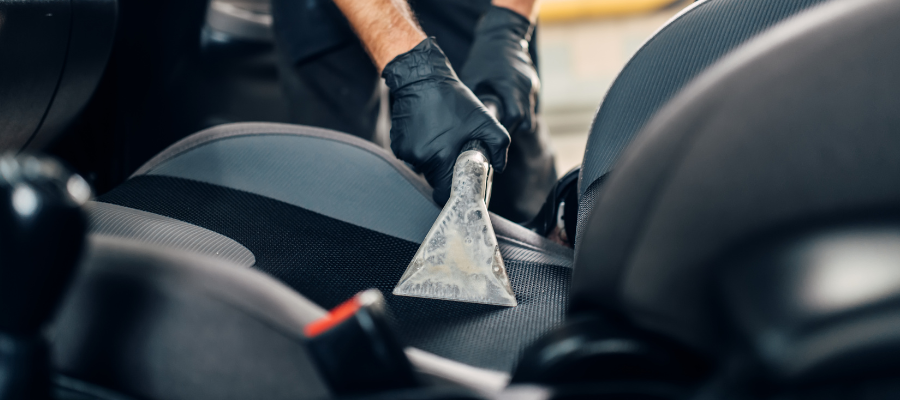
This process also usually includes vacuuming inside the car including seats, carperts, and floor mats. It may even include shampooing or steam cleaning carpets and upholstery to remove deep-set dirt, stains, and odours.
Attention is also given to cleaning windows, mirrors, and other glass surfaces inside the car. The goal is to refresh and restore the interior to a clean, comfortable, and inviting condition.
The scope of the interior clean will depend on the package you book and any extras you decide to purchase. Many valeters offer additional services for the interior such as pet hair removal, odour removal, leather conditioning, fabric protection, and trim dressing.
How The Booking Process Works
While the process of booking a mobile valet may vary depending on the provider, it usually involves a few straightforward steps. Here’s what you can generally expect when hiring a mobile valeter:
- Customer enquiry: You contact the valeter via phone, website, or app to ask about availability and services.
- Package selection: You choose the type of valet and any extras you want (e.g., exterior wash, full valet, mini valet, waxing).
- Date and time: You pick a convenient date and time for the service at your preferred pickup/drop-off spot.
- Booking confirmation: The valet company confirms your booking details including the time, place, service package, and price. This is usually done by email or text.
- Payment: Payment may be made upfront online, at booking, or after the service, depending on the company’s policy.
- Service delivery: On the scheduled day, the valeter will come to your location and perform the cleaning.
- Inspection and photos: Once the job is done, you’ll usually have a chance to inspect the work. The valeter may also ask your permission to take photos to showcase their work on their website or social media.
- Feedback and follow-up: As the final step, you might receive a request to provide feedback or leave a review.
Quick Tip: Knowing how often your car needs a mobile valet makes scheduling easier, letting you set up regular maintenance valets without to constantly rebook.
Conclusion
Mobile car valeting is more than just a quick clean. Unlike automatic washes or a DIY job, it involves a much more thorough process. Valeters follow a detailed routine that covers every inch of your car, inside and out, leaving it looking fresh and well cared for.
They’re highly experienced and use the most efficient, up-to-date techniques along with the best products and equipment to clean your vehicle while minimising the risk of damage to the paintwork.
Just be sure to check exactly what’s included in the package when choosing a valeter, as services can vary widely, from basic exterior washes to mini valets, full valets, and complete details that take hours or days to complete.
Hopefully, this guide has given you a clearer idea of what’s included in a typical mobile car valet, along with an understanding of the extras and advanced services you might find in premium packages.
